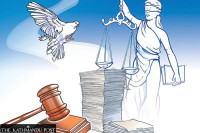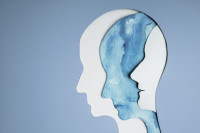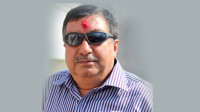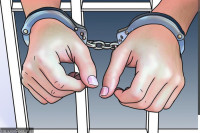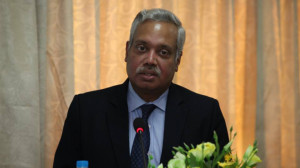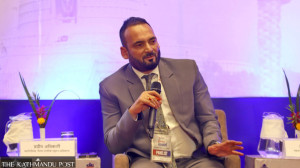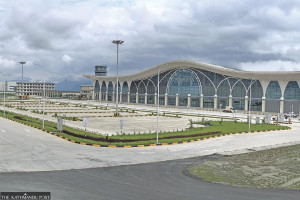National
After ups and downs, bilateral ties seem to be back on track
Three years ago Narendra Modi was sworn in as the 15th prime minister of India amid a spectacular ceremony attended by around 4,000 guests.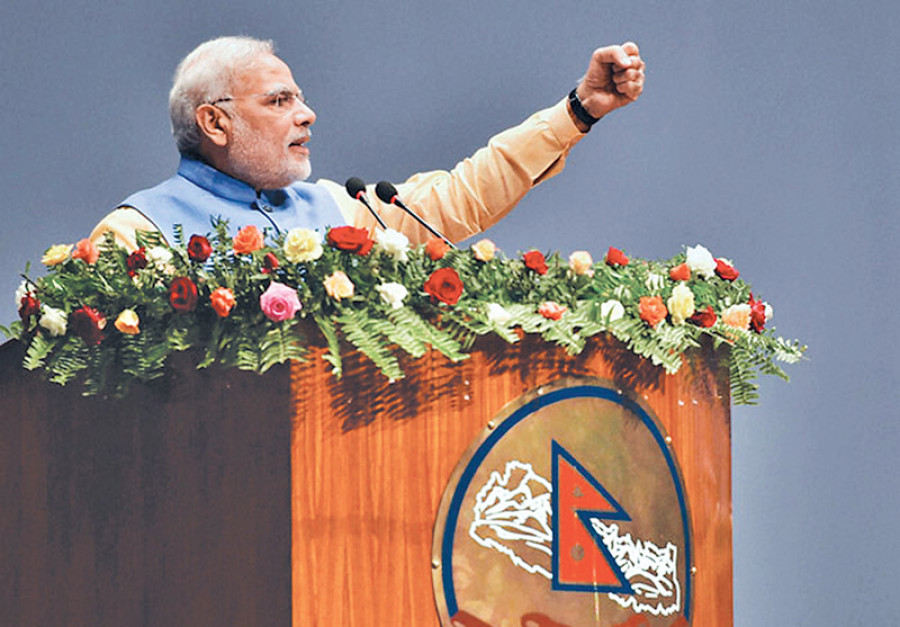
Kamal Dev Bhattarai
Three years ago Narendra Modi was sworn in as the 15th prime minister of India amid a spectacular ceremony attended by around 4,000 guests.
Then prime minister Sushil Koirala was among the guests as Modi had invited all South Asian leaders, including Nawaz Sharif, the prime minister of Pakistan, India’s arch-rival. What Modi after winning landslide national elections in 2014 was trying to do was send a message across the region that he would invest a considerable amount of efforts on what he called his neighbourhood policy.
Four months into office, Modi visited Nepal in September 2014, first by an Indian prime minister in 17 years, and delivered a speech in Parliament amid a thunderous applause. He was again in Nepal later that year to participate in the Saarc Summit.
Nepal-India ties were expected to take new heights.
But how are Nepal-India relations placed now?
Political observers said on Thursday, on the eve of the third anniversary of Modi’s ascension to power, that both Nepal and India “need to do more to make the ties more cordial”.
There have been several ups and downs in the last two years, they say. Sudhindra Bhadoria, spokesperson for the Bahujan Samaj Party, who closely follows Nepal-India relations, said Modi started on a high note, creating a popular image for himself but it failed to sustain.
“Nepal has undergone a lot of changes in the last 10 years. We need to adopt a new approach when it comes to dealing with Nepal,” he said, adding: “Though relations at the people-to-people are excellent, similar spirit is not reflected at the government-to-government level.”
Until the first quarter of 2015, Nepal and India were enjoying good bilateral
relations. India’s prompt response in the aftermath of the devastating earthquake in April 2015 was seen as a great gesture from a friendly neighbour.
India’s terse response to Nepal’s constitution promulgation in September 2015 first triggered a setback and the subsequent blockade by the Modi government did the most damage.
Indian media and observers believe that the KP Sharma Oli government, which replaced the Sushil Koirala dispensation, stoked anti-India rhetoric so much so that it caused further damage to already soured relations.
After Pushpa Kamal Dahal, who resigned on Wednesday, came to power in August last year, relations seem to have started to get back on track.
“Unlike in the previous years, both sides have chosen to handle the issues in a quiet manner. Both sides are communicating their concerns without making them public,” said a diplomat requesting anonymity. “This is one major change that has been seen in recent months.”
New Delhi’s shift in stance of late in relation to constitution amendment and local elections seems to stem from this very new approach.
In recent months, Delhi appears to have softened its position on Nepal’s constitution. Earlier, it had maintained a position in which it called for broader consensus, in an implication that the agitating Madhes-based parties’ concerns must be addressed. Secondly, there seems to have communication from Delhi to the agitating parties to participate in local elections, the second phase of which is scheduled for June 14.
“There have been a lot of changes in Modi’s Nepal policy in the last three years,” said BC Upreti, a member of Nepal-India Eminent Persons Group. “The government has been focusing on completing pending projects. Modi has been sensitive about Nepal and its problems. There are still some complications, and India should help Nepal overcome those problems.”
Despite ups and downs in relations, observers say not all was lost.
Modi’s visits were followed by a meeting of Joint Commission after 22 years and Power Trade Agreement among other several issues. Meetings of bilateral mechanisms are on track. Big projects such as Karnali Hydropower, Arun 3, Hulaki Road and Pancheshawr Development Authority are gaining momentum. These were some pending issues in the previous years. There have been as many as seven high-level visits between the two countries, which observers describe as a positive sign.
Indian President Pranab Mukherjee visited Nepal last year. This was first visit by an Indian President in 19 years.
PM Dahal visited India twice last year.
President Bhandari was on a state visit to India last month.
Of late, observers say, India’s main concern is growing Chinese influence, especially in the wake of Nepal’s decision to sign a deal on the Belt and Road Initiative.
Nonetheless, observers say both sides in the last two years have realised their mistakes and are now treading carefully while dealing with each other.




 8.12°C Kathmandu
8.12°C Kathmandu
